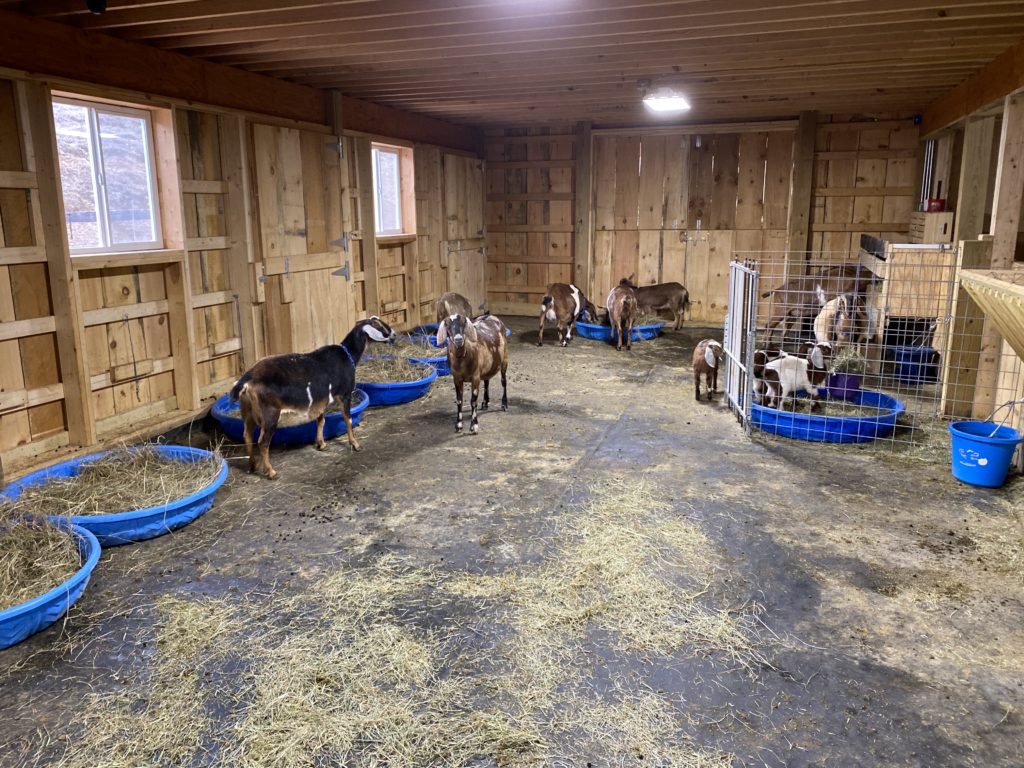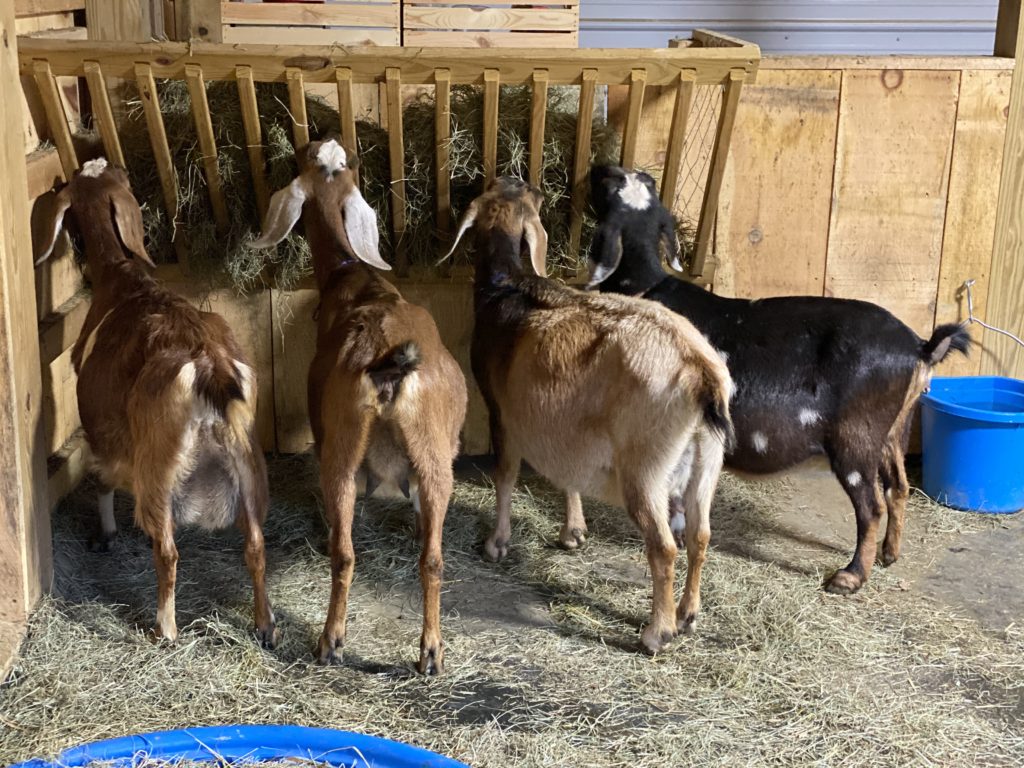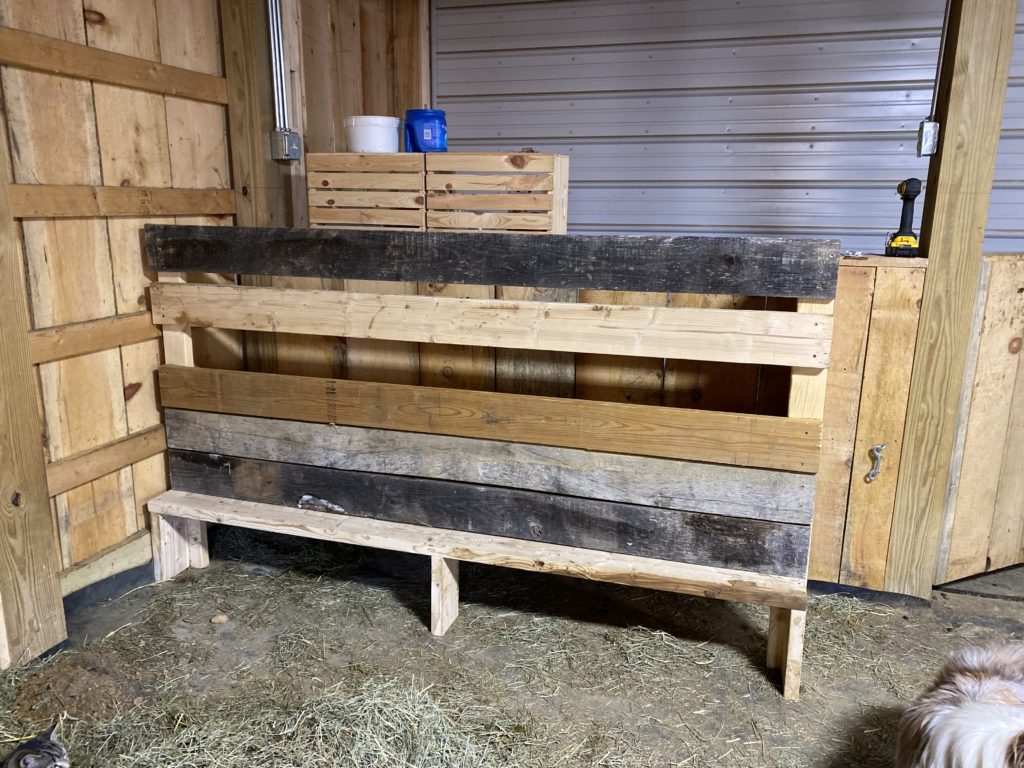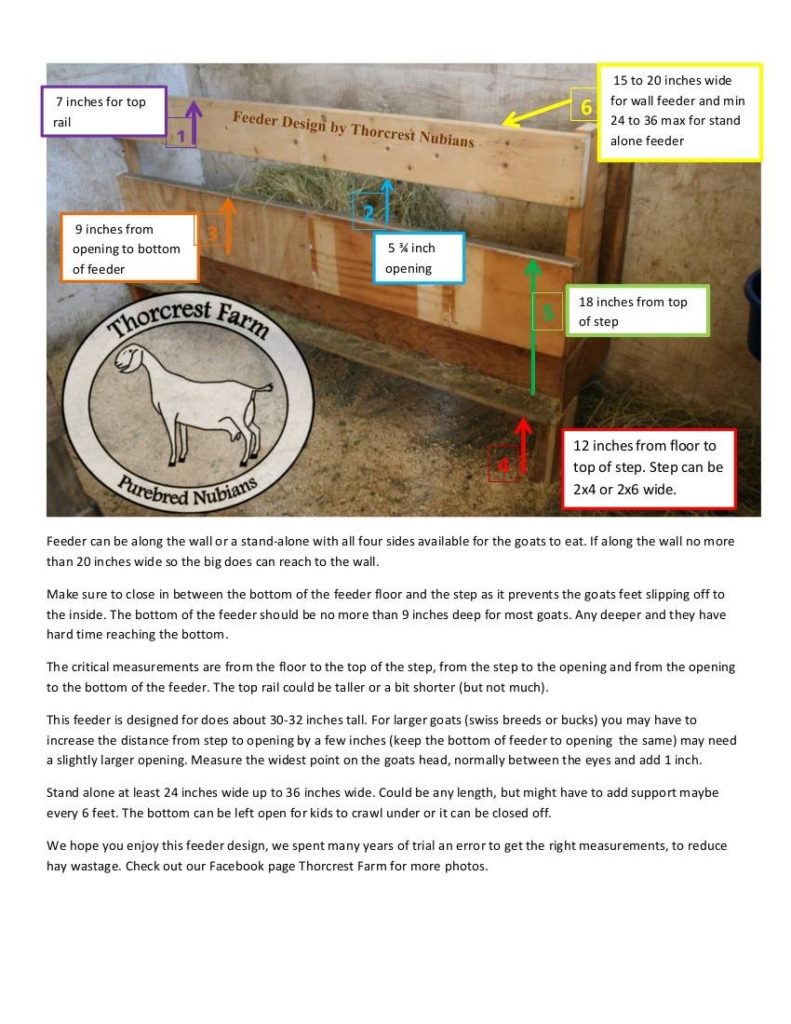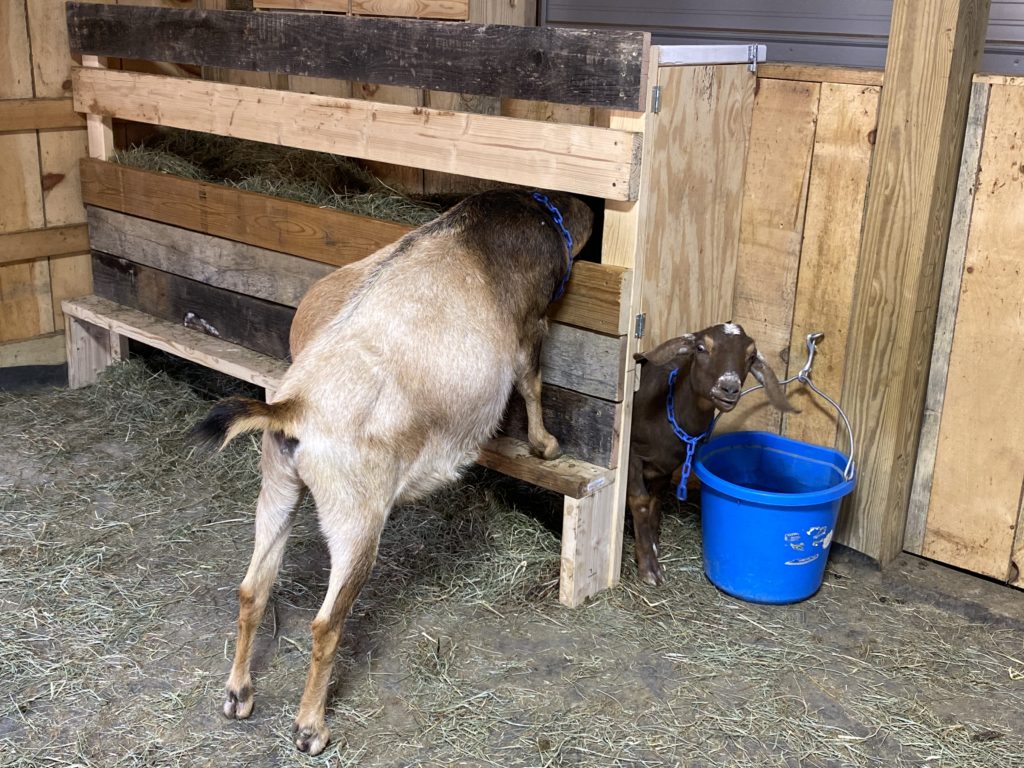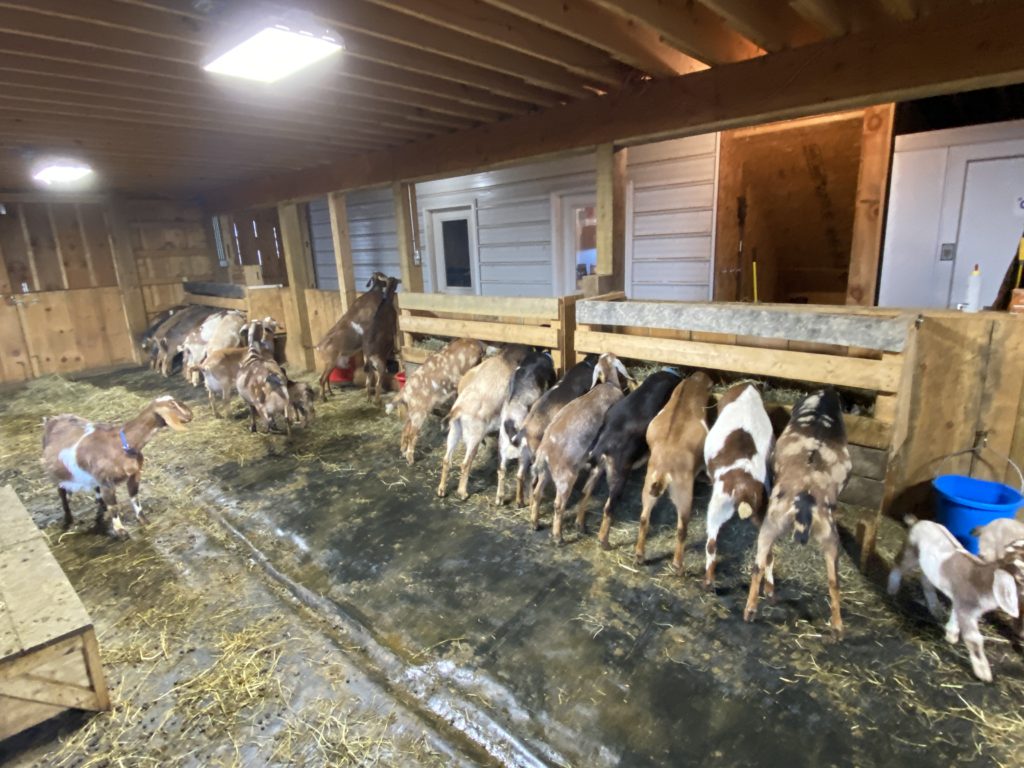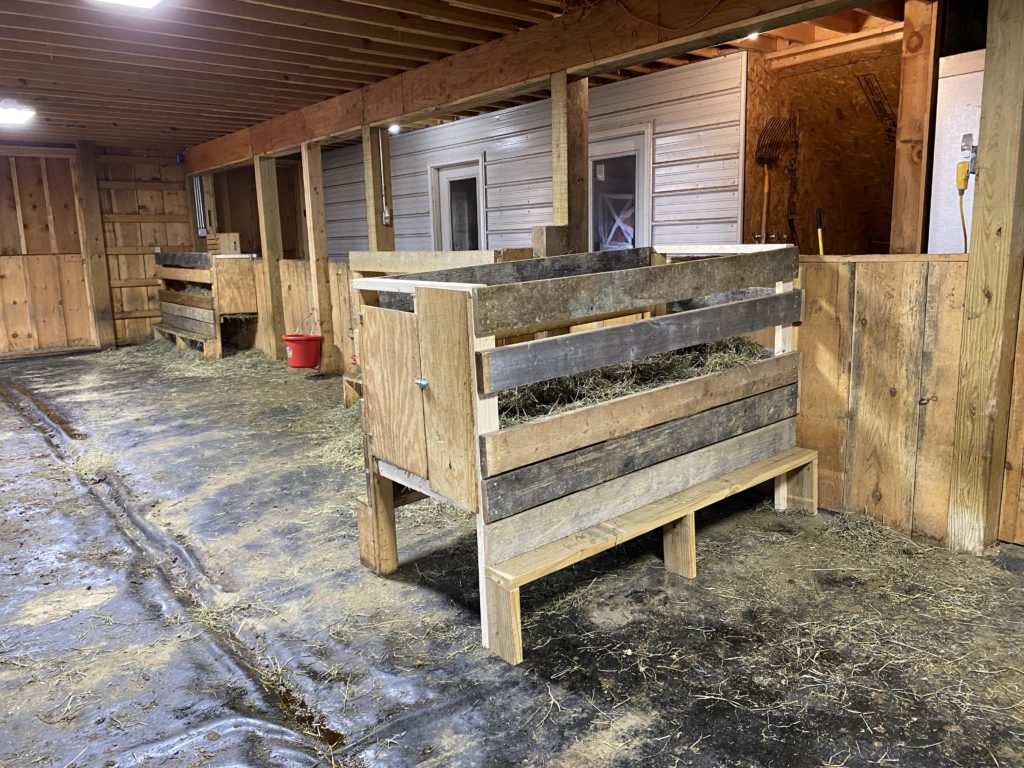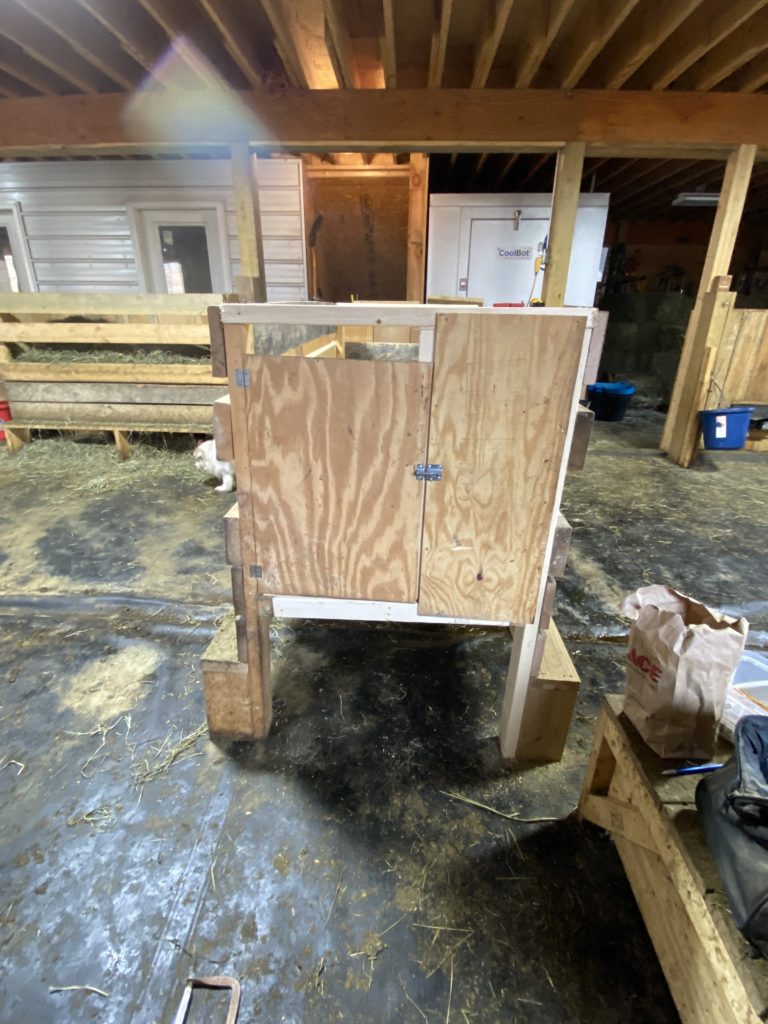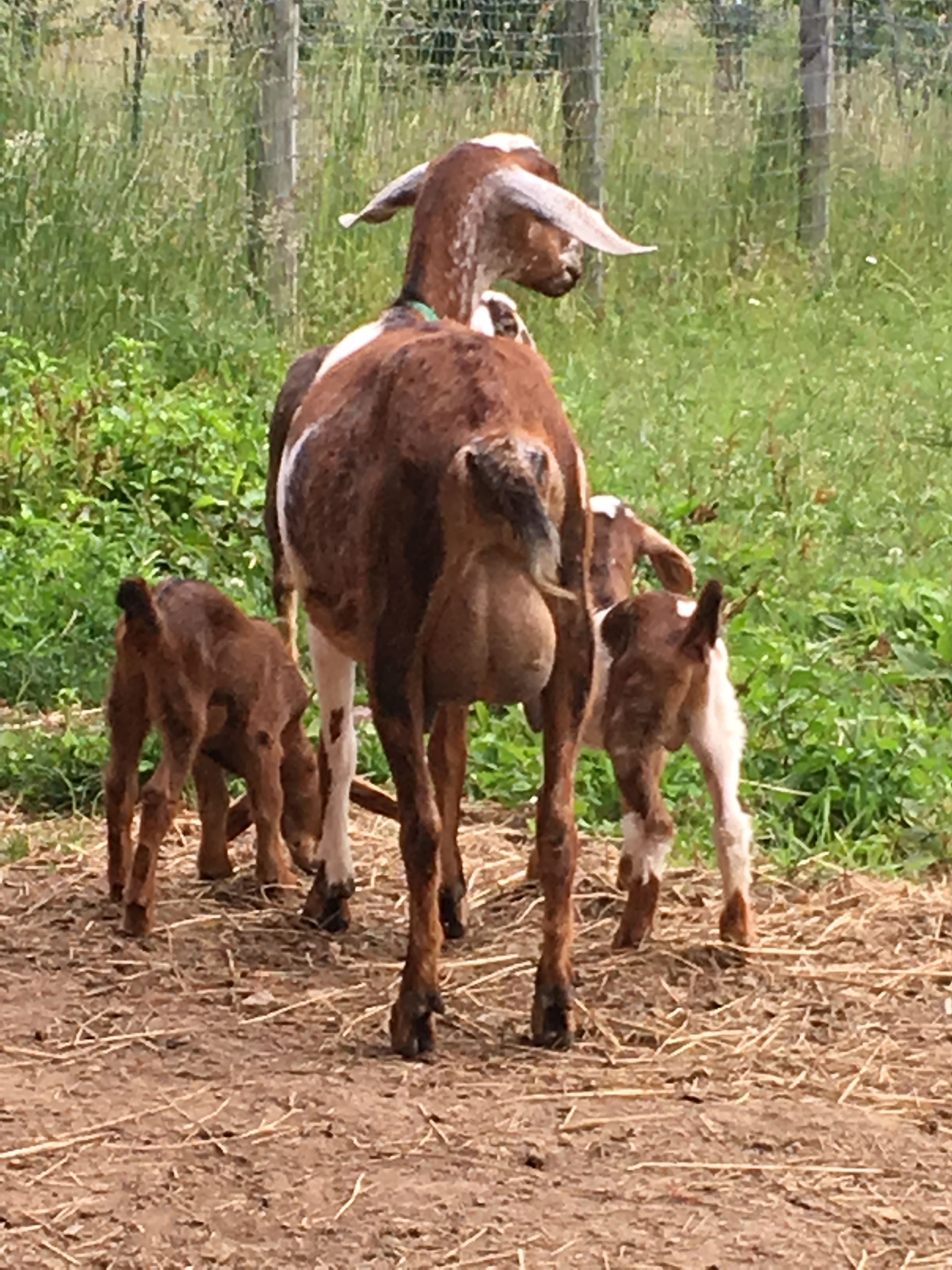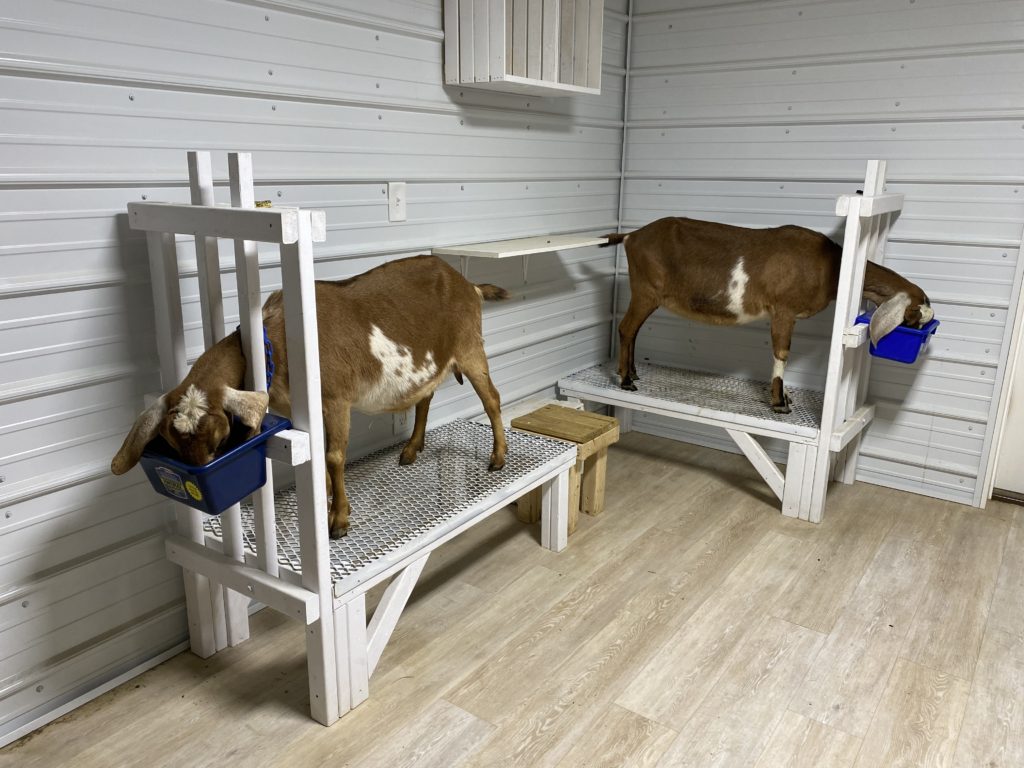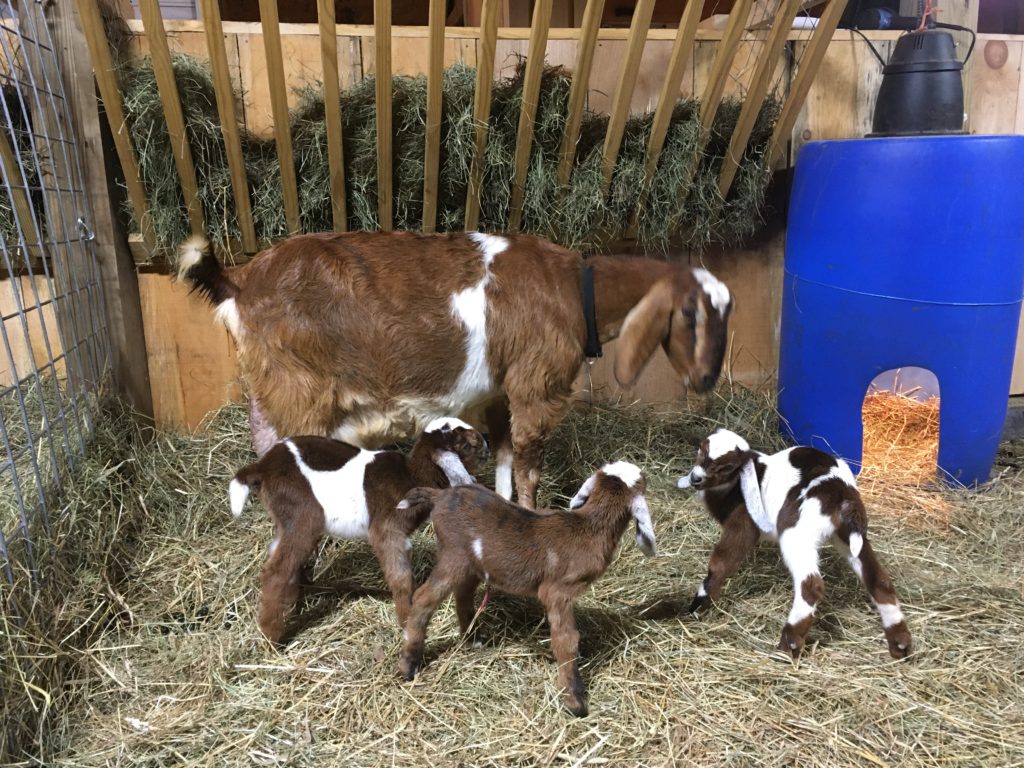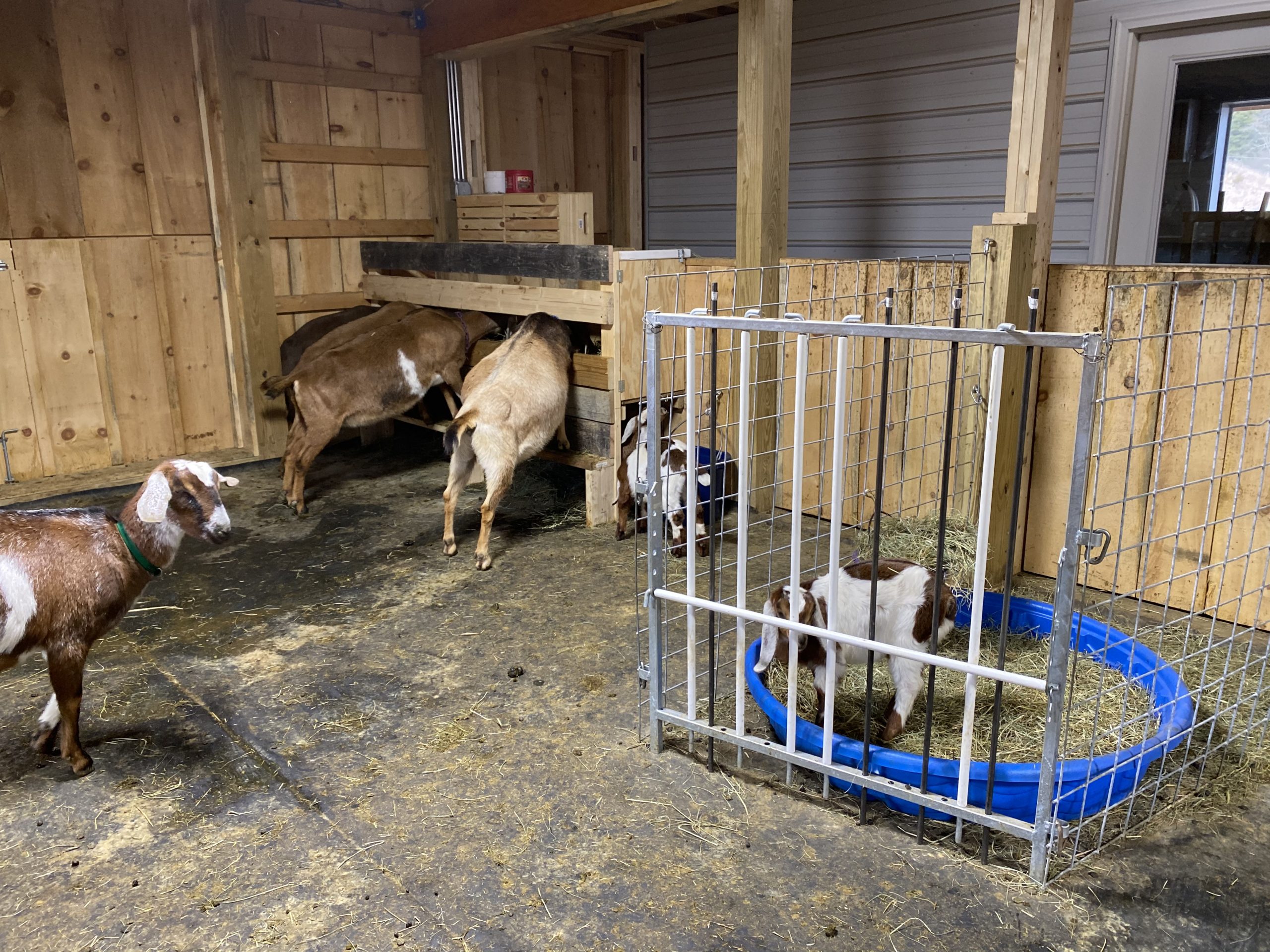
We have some young kids in with the herd, and with our new mangers, I was concerned that they weren’t able to graze spilled hay anymore, and that — when the hay was eaten down some — couldn’t reach the hay. (Yay for no more hay waste! Boo for hungry kids.) Also, we might have something like 12-16 kids coming from February to March, and I’ll want them to have a good place to get away, eat, and sleep, too, so, we’ve been experimenting with a creep pen for them.
Left is a video of the kids first exploring the prototype version that we threw together so that we could learn. (Hit the triangle if you don’t see a preview picture.)
This pen measures 5’ x 5’. It first had the kids’ heat hut in it, mostly to train them to it, then it had just the heat lamp above the kiddie pool, and now it just has the pool with hay in a purple bucket.
Obviously, those three 5-week-old kids were barely fitting in that kid hut by this time, and we certainly weren’t going to fit 15 in kid huts this spring. Thus, we will need a creep space come March, and it will need to be bigger than this prototype we’re playing with now. (More on the new and improved version that resulted HERE!)
In case you don’t know what a creep space is, it gets its name from the creep gate that will only allow a small baby — goat or sheep, or sometimes a puppy — to creep in while keeping adults out. Some farmers give food that they only want babies to have, and others want to provide heat or a rest area free from adult bullying. We use ours for all these features.
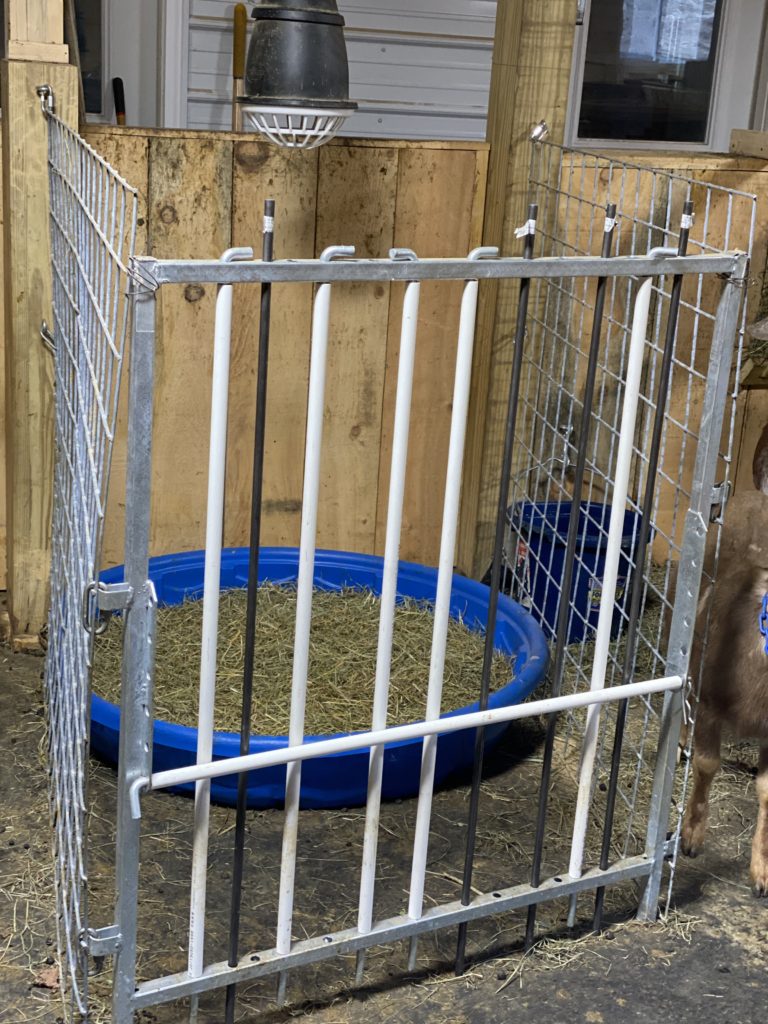
Our creep gate was made by Premier 1. It is very sturdy. It is built with holes that are drilled at specific intervals both tops and bottom and side to side. Moveable steel rods allow the farmer to adjust the height and width of the creep openings to the size of their growing young ones.
The basic gate comes with 5 vertical steel rods inserted into PVC slip covers, and one horizontal one. We invested in four more rods (black in the picture) from a local hardware store, but you can also buy extra rods from Premier. We found by trial and error that we needed six-inch openings for our littles to get in, and still keep out a petite 6-month old doeling in our herd.
We attached two 5’ goat panels to the gate and wall with carabiners and wire. That wooden wall behind is really one of our gates that leads to our barn aisle. This has proved very handy in servicing this area, though one can remove the rods to get into the area from the front.
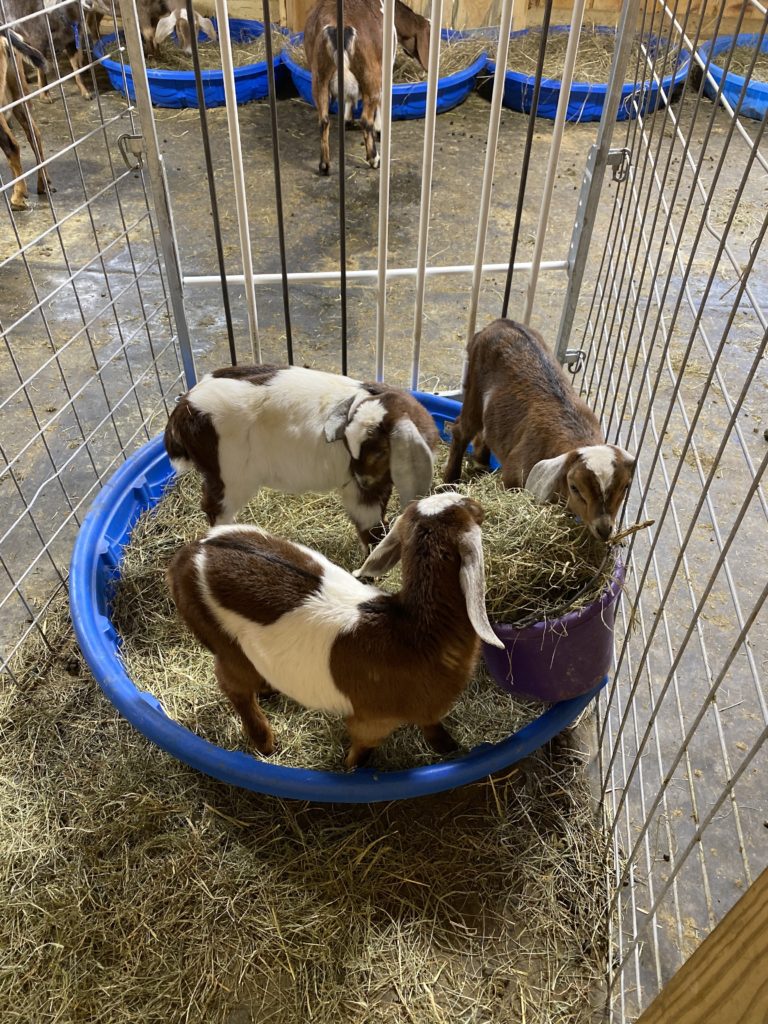
Kids eating in peace. 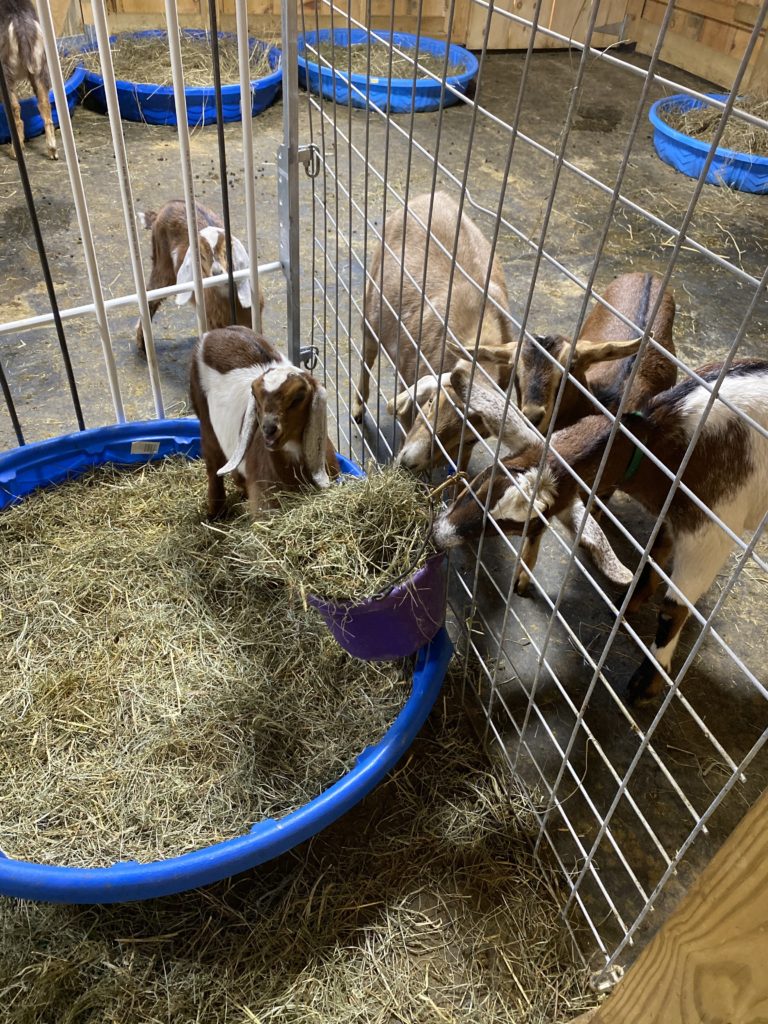
Adults can’t reach the babies’ hay.
As you can see in the picture below, this creep space doesn’t take up much of our overall space, and the kids freely go out with the herd whenever they want to. We often find them in the pen in the early morning curled up together. (If you’re wondering about the kiddie pools, click here.)
